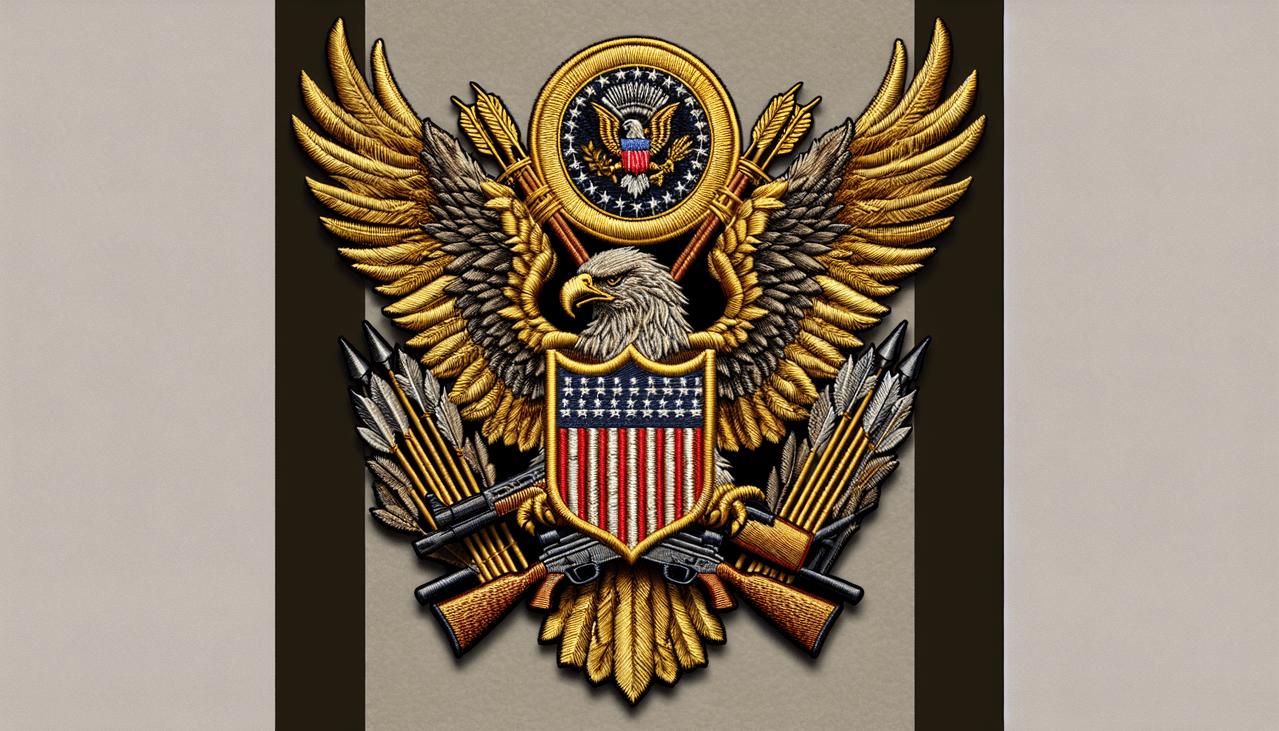Throughout history, the fabric of military culture has been embroidered with various symbols of honor, courage, and sacrifice. Among these, combat patches stand out as a storied testament to soldiers’ bravery and the intense experiences of warfare. Let’s delve into the significance, history, and traditions surrounding these emblems of combat service.
- The origins and significance of combat patches.
- Criteria for eligibility and the international practice of awarding combat patches.
- Global perspectives on combat patches from various nations.
- The evolution and future of combat patch traditions in military culture.
Understanding Combat Patches
Combat patches, also known as “shoulder sleeve insignia-former wartime service,” are a unique military tradition that symbolizes a soldier’s participation in combat operations. These patches are a visual record of a unit’s engagement in a theater of war and are often worn with pride and reverence.
In the United States, the tradition of wearing a combat patch dates back to World War I. Soldiers who were part of the American Expeditionary Forces were authorized to wear the insignia of the unit with which they served overseas upon their return. This practice has carried on through subsequent conflicts, becoming a rite of passage for those who have faced the perils of war.
Across the globe, the practice of awarding combat patches varies. Nations such as the United Kingdom, Canada, and Australia also have traditions of bestowing similar insignia, though the criteria and designs may differ. These patches aren’t merely decorative; they represent a tangible connection to the history and heritage of the unit and the collective memory of its wartime experiences.
Eligibility and Criteria for Combat Patches
Eligibility for wearing a combat patch is generally determined by participation in a combat zone for a specified period. However, the criteria for what constitutes a combat zone and the required duration of service within it can differ from one country to another.
In the United States, for instance, soldiers must serve in a designated combat zone for a certain period (typically 30 days) to be eligible for a combat patch. The Department of Defense designates these areas, and they can include active war zones as well as other areas where troops are subjected to hostile fire or imminent danger.
Other countries have their own standards and traditions. In the British Army, for example, soldiers might receive embroidered military patches for participation in specific campaigns or operations, signifying their role in historical events that shaped the world.
It’s important to note that combat patches are not given lightly. They symbolize a soldier’s commitment, sacrifice, and bravery, and are often seen as badges of honor among military personnel.
Combat Patches Around the World
Combat patches have rich histories and are deeply rooted in the military cultures of many nations. From the storied British “Desert Rats” insignia to the German Armed Forces Badge for Missions Abroad, each patch has a story to tell.
For example, the Australian Defence Force awards a variety of badges and patches for service in operations across the globe, each indicating the specific operation and the role played by the service members.
Similarly, NATO forces have their own set of patches and badges that reflect participation in joint operations, signifying the collaborative efforts of multiple nations in peacekeeping and combat roles.
These patches not only denote a soldier’s service but also create a sense of camaraderie and unity among those who have served under the same banner, fostering an international brotherhood of arms.
The Significance of Combat Patches in Military Culture
Combat patches are more than just pieces of fabric; they are powerful symbols of identity and belonging within the military community. They tell a soldier’s personal story of service and sacrifice and act as a bridge between generations of military personnel.
The wearing of a combat patch is a tradition that instills pride and builds esprit de corps. It’s a way for service members to carry the legacy of their units’ achievements and the memory of their fallen comrades.
Moreover, combat patches serve as a visual history of military campaigns, helping to educate new recruits and the public about the sacrifices made by service members in the pursuit of peace and security.
As we move forward, the traditions surrounding combat patches continue to evolve. But one thing remains unchanged: they will always be a cherished part of military heritage, honoring those who have stood in defense of their nations.
In conclusion, combat patches are a universal symbol of military service recognized by many countries. They celebrate the bravery and dedication of soldiers from across the globe and stand as a testament to the enduring brotherhood formed in the crucible of combat. As we look ahead, the tradition of these patches will undoubtedly adapt to the changing landscape of warfare, but their essence will remain the same—honoring the service and sacrifice of our military personnel.

